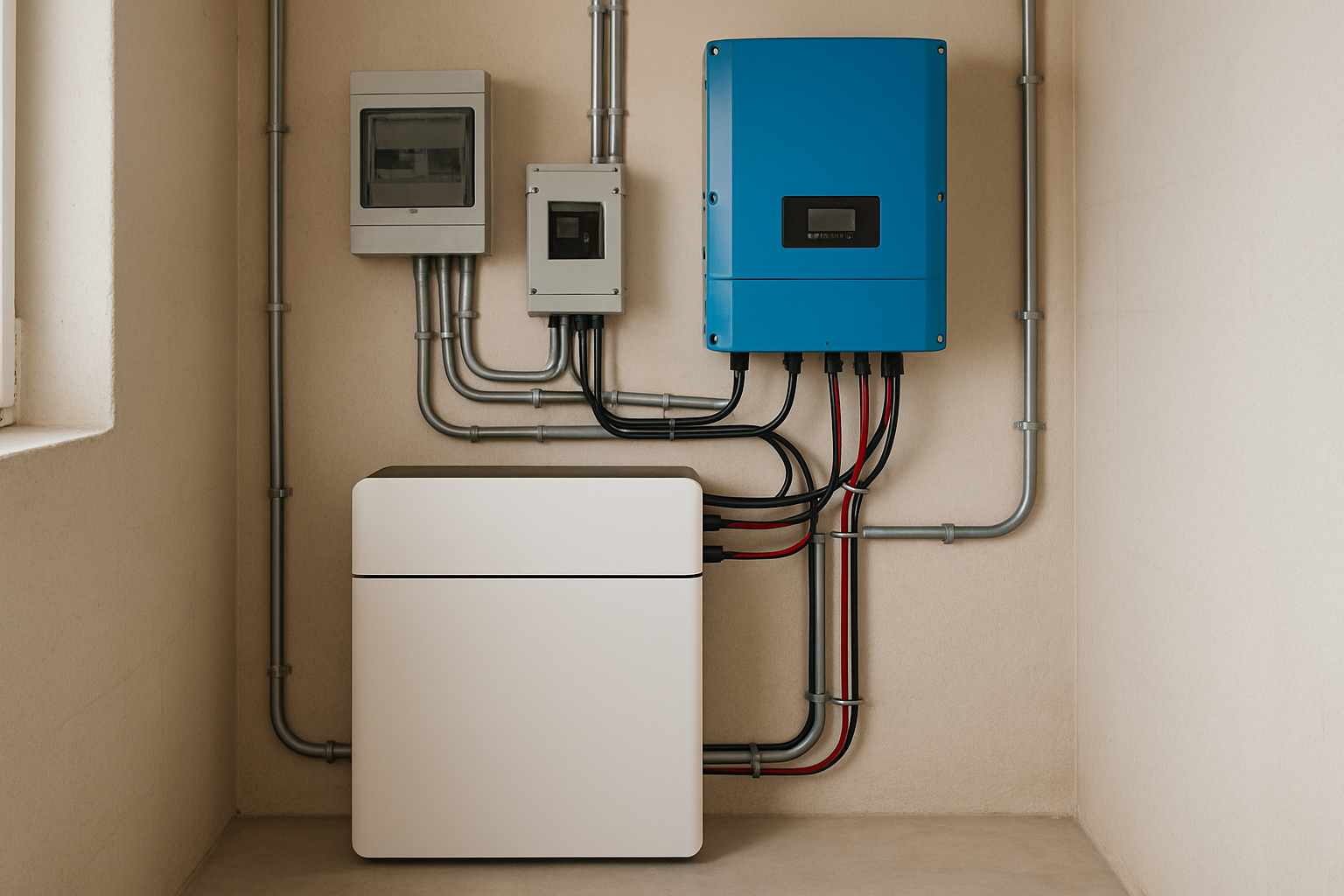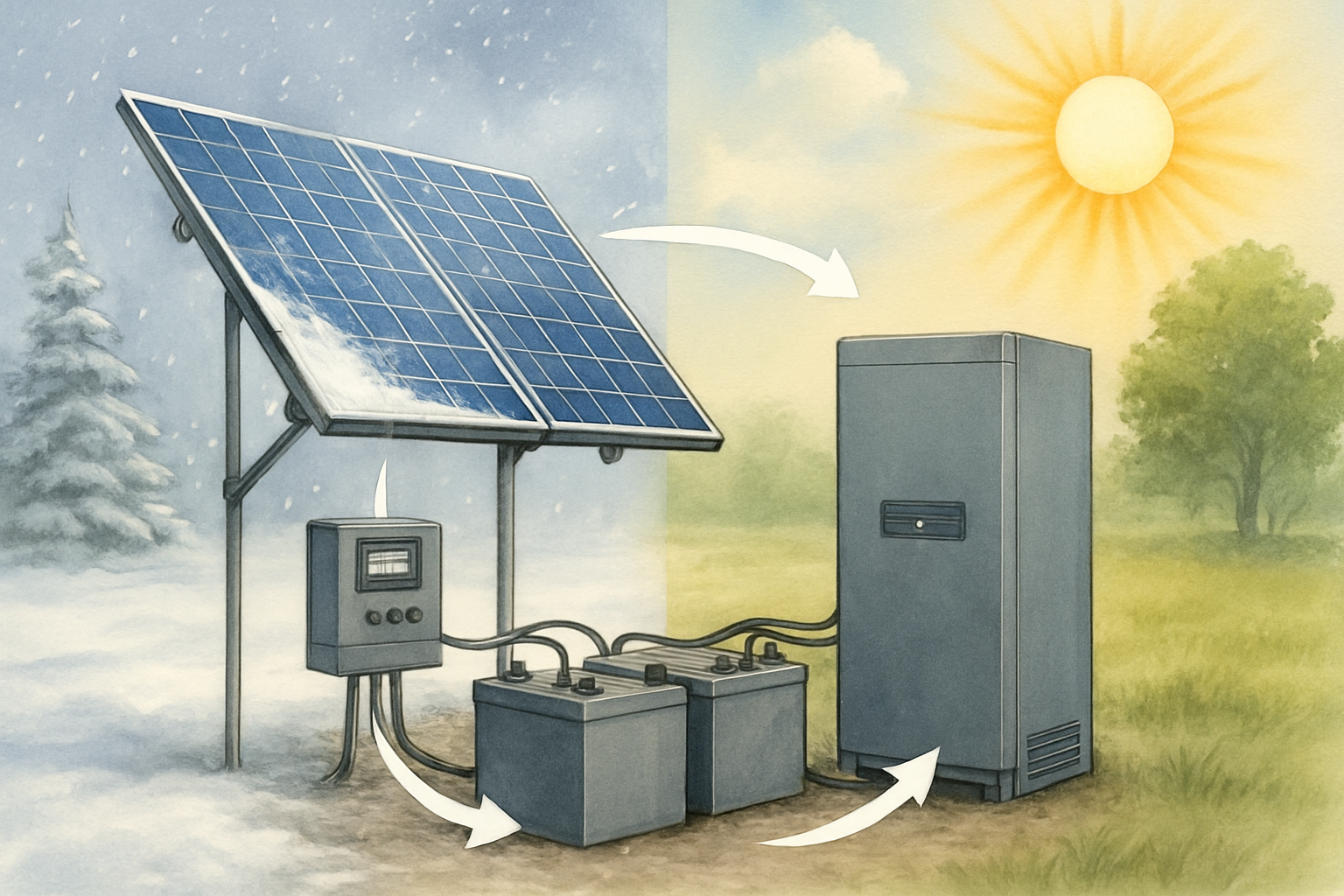Many people believe that for off-grid batteries, a full 100% charge is always the goal. This perception often stems from experiences with older battery technologies or a misunderstanding of modern battery chemistry. However, for today's advanced off-grid battery systems, especially those utilizing Lithium Iron Phosphate (LiFePO4) technology, the reality is more nuanced. Understanding optimal charging practices can significantly extend the lifespan and enhance the reliability of your energy storage.
This article will clarify common misconceptions, explain how modern battery chemistries behave, and provide practical strategies for maintaining your off-grid batteries for lasting energy independence.

The 100% Charge Myth: A Closer Look
The idea that batteries always need to reach 100% charge is a deeply ingrained belief. For lead-acid batteries, frequent full charges are indeed important to prevent sulfation. However, applying this same rule to all battery types, particularly LiFePO4, can be counterproductive.
Why the Perception Exists
Historically, lead-acid batteries were the standard for off-grid systems. These batteries benefit from regular equalization charges to 100% to mix electrolytes and prevent stratification. This practice led to the widespread belief that all batteries require constant full charges. Other lithium-ion chemistries, like Nickel Manganese Cobalt (NMC), also have specific charging recommendations, often suggesting partial charges for daily use to extend lifespan .
The Reality for Modern Off-Grid Batteries
LiFePO4 batteries behave differently. While they tolerate full charges better than some other lithium-ion types, maintaining them at a constant high State of Charge (SOC) or high voltage for extended periods can still accelerate degradation . Operating lithium battery cells at high voltage levels speeds up chemical reactions within the cell, leading to degradation, which often manifests as lithium plating on the anode, reducing capacity and increasing the risk of short circuits .
A study on LiFePO4/C batteries found that higher SOC was associated with a higher rate of capacity fade before the battery cells reached their end-of-life criterion of 20% capacity fade . Another source indicates that LiFePO4 cycle life is reduced by maintaining them at a high SOC, similar to other lithium-ion batteries .
Understanding LiFePO4 Battery Health
To truly optimize your off-grid system, you need to understand the unique characteristics of LiFePO4 batteries.
How LiFePO4 Batteries Differ
LiFePO4 batteries are known for their high safety, long lifespan, and stable performance . They offer a significantly higher cycle life compared to lead-acid batteries and other lithium-ion chemistries like NMC . Their unique phosphate-based chemistry provides greater thermal and structural stability, contributing to a better safety profile and reducing the risk of thermal runaway .
The nominal voltage of a single LiFePO4 battery cell is typically 3.2V, with an optimal charge voltage range between 3.2V and 3.65V . Exceeding 3.65V per cell can lead to degradation and premature failure .
Factors Affecting Battery Degradation
Several factors influence the longevity of your LiFePO4 batteries:
- High Voltage Stress: Prolonged operation at maximum voltage accelerates degradation .
- High Temperatures: Charging or storing LiFePO4 batteries in elevated temperatures can hasten their degradation process . The recommended temperature range for charging LiFePO4 batteries is -20°C to +60°C .
- Deep Discharges: While LiFePO4 batteries are more tolerant of deep discharges than lead-acid, consistently draining them to extremely low levels (e.g., below 10-20% SOC) can still impact their overall lifespan .
- Charging/Discharging Rates: Extremely fast charging or discharging can generate excessive heat and stress the battery cells.
| Battery Voltage | Recommended Charge Voltage | Acceptable Charge Voltage Range |
|---|---|---|
| 12V (12.8V) | 14.4V | 14.0V ~ 14.6V |
| 24V (25.6V) | 28.8V | 28.0V ~ 29.2V |
| 48V (51.2V) | 57.6V | 56.0V ~ 58.4V |
Table: Recommended LiFePO4 Battery Charging Voltages
Optimal Charging Strategies for Longevity
Moving beyond the 100% charge myth involves adopting strategies that align with LiFePO4 battery chemistry.
The "Sweet Spot" for LiFePO4 Batteries
For maximizing lifespan, many experts suggest keeping lithium-ion batteries within a specific State of Charge (SOC) window. For LiFePO4 batteries, a range between 20% and 90% is often considered ideal . This approach minimizes stress on the battery cells, which helps prevent degradation over time . While LiFePO4 batteries do not mind being charged to 100%, avoiding prolonged periods at the absolute maximum voltage can be beneficial .
It is worth noting that unlike other lithium-ion batteries with a linear voltage-to-SOC curve, LiFePO4 batteries have a very flat voltage curve for a significant portion of their charge. This makes it challenging to define an exact 80% SOC based solely on voltage readings . Therefore, relying on a Battery Management System (BMS) for accurate SOC tracking is crucial.
Implementing Smart Charging
Smart charging systems are vital for off-grid battery care. A Battery Management System (BMS) is an electronic system that monitors and controls battery performance, ensuring safety, efficiency, and longevity . It prevents overcharging, over-discharging, and helps balance individual cells within the battery pack . Without a BMS, batteries can suffer from inefficiencies and even permanent damage .
Smart charging optimizes the charging process by adjusting parameters like voltage and current in real-time, based on factors such as battery temperature, voltage, and SOC . This adaptive approach extends battery lifespan and improves overall system efficiency. Smart charging also plays a role in integrating renewable energy sources, allowing for more flexible energy management . For instance, hybrid systems combining solar PV with battery storage are increasingly deployed to enhance grid flexibility, shifting electricity to periods of higher demand or market value .
Practical Care for Off-Grid Battery Systems
Beyond charging habits, several other practices contribute to the long-term health of your off-grid batteries.
Monitoring and Maintenance
- Regular SOC Checks: Utilize your BMS or a dedicated battery monitor to keep track of your battery's State of Charge. A battery monitor is a crucial component that provides real-time information about your battery's health and performance .
- Voltage Monitoring: Ensure your charging system operates within the recommended voltage ranges for your LiFePO4 batteries to prevent overvoltage .
- Temperature Control: Protect your batteries from extreme temperatures. Store and operate them within their specified temperature range to prevent accelerated degradation .
- Occasional Full Charges: While avoiding constant 100% SOC is generally recommended, occasional full charges can be beneficial for the BMS to perform cell balancing, ensuring all cells are equally charged and extending the overall pack life .
System Sizing and Design
Properly sizing your off-grid solar and storage system is fundamental to battery longevity. An undersized system might lead to frequent deep discharges, while an oversized system could result in batteries spending too much time at high SOC without sufficient discharge cycles. An appropriately sized system balances energy generation and consumption, allowing your batteries to operate within their optimal SOC window more consistently.
The cost of battery storage has decreased dramatically, falling by 93% from 2010 to 2024, from over $2,500 per kilowatt-hour to just $192 in 2024, according to the International Renewable Energy Agency's (IRENA) Renewable Power Generation Costs in 2024 report . This significant cost reduction makes robust and well-designed off-grid systems more accessible than ever, allowing for configurations that prioritize battery health and long-term performance.
Sustaining Your Energy Independence
The notion that off-grid batteries always require a full 100% charge is a common misconception. For LiFePO4 batteries, while they are robust, a more nuanced approach to charging is beneficial. Focusing on an optimal State of Charge window, utilizing smart charging technologies, and actively monitoring your system will significantly enhance battery lifespan and reliability. By adopting these informed practices, you can ensure your off-grid power system provides consistent, dependable energy, truly empowering your energy independence for years to come.
Frequently Asked Questions
Is it ever okay to charge LiFePO4 batteries to 100%?
Yes, it is generally okay to charge LiFePO4 batteries to 100%. Unlike some other lithium-ion chemistries, LiFePO4 tolerates full charges well. However, avoiding prolonged storage at 100% SOC at high voltages is advisable for maximum lifespan. Occasional full charges are also beneficial for the Battery Management System (BMS) to balance the cells .
How often should I check my battery's State of Charge (SOC)?
You should regularly monitor your battery's SOC using a dedicated battery monitor or your system's Battery Management System (BMS). Daily or weekly checks are good practice, especially in off-grid scenarios where energy consumption fluctuates. This helps you manage your energy usage efficiently and detect potential issues early .
Can overcharging damage my off-grid battery?
Yes, overcharging can damage off-grid batteries. Operating lithium battery cells at excessively high voltage levels accelerates internal chemical reactions, leading to degradation, reduced capacity, and safety risks like lithium plating . A good Battery Management System (BMS) is designed to prevent overcharging .
What is the ideal temperature range for off-grid batteries?
For optimal performance and longevity, LiFePO4 batteries should be charged within a temperature range of -20°C to +60°C (-4°F to +140°F) . Extreme temperatures, both hot and cold, can negatively impact battery health and efficiency . Maintaining moderate temperatures helps preserve the battery's lifespan.





Leave a comment
All comments are moderated before being published.
This site is protected by hCaptcha and the hCaptcha Privacy Policy and Terms of Service apply.